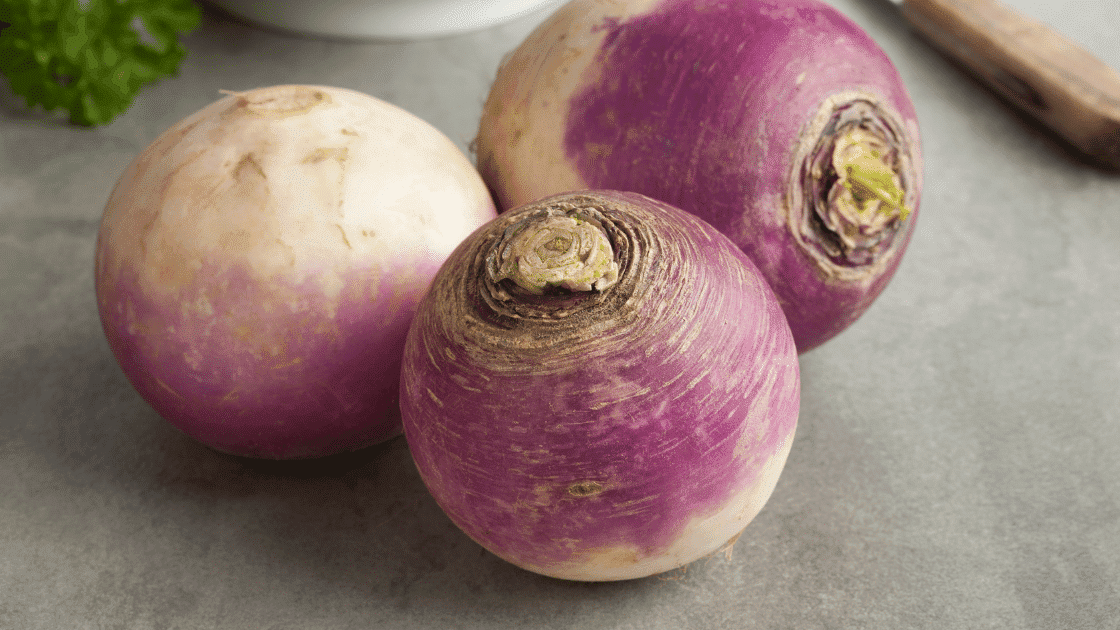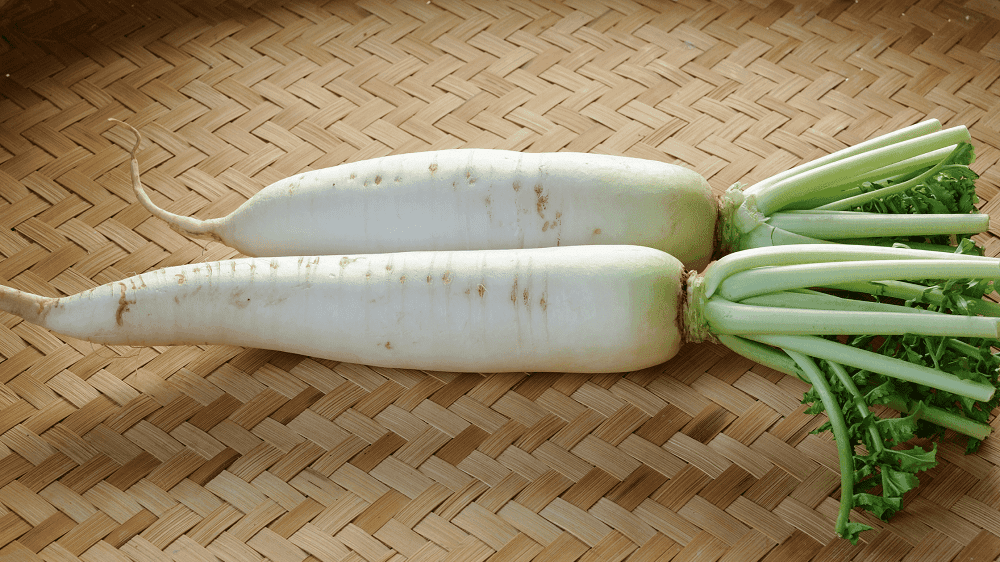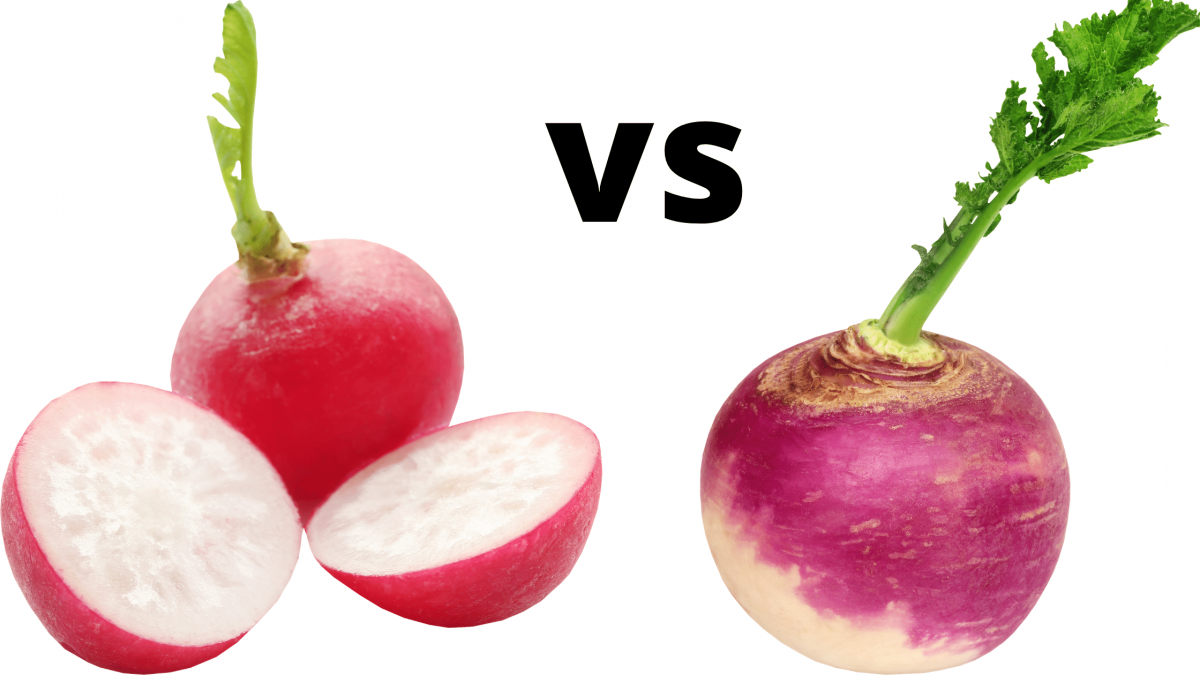As the workday ends and suppertime looms near, the pressure of creating an edible meal begins, and questions start to surface: Will grandma be able to chew through this chicken? Is pumpkin pie a good post-meal dessert, or does it just taste like a festive candle? Are mashed turnips a dull option, or are radishes just too daring and ambitious for tonight’s banal meal? What is a vastly underrated and more pressing debacle than the pumpkin pie issue is the topic of radish vs. turnip. In this article, I will be delving into the radish and turnip value and examine which one is the worthiest addition to a hearty diet and your dinner plate.
Radish or Turnip: What Vegetable Comes out on Top?
Radish vs. turnip, stiff competition between two vegetables that are completely underrated even though they provide an abundance of nutritional value, can be the center of various delicious meals and are valuable in a multitude of ways in a daily diet. Of course, as I compare radishes and turnips, I must pit the two against each other. Similar to the age-old question of Britney vs. Christina, there can only be one winner—and much like Britney, the clear winner in this round is the radish due to its unique taste, diverse use in recipes, and its imperative benefits to your diet.
Why the Radish is Utterly Ravishing
The radish is an excellent food source that can protect you against cancer with its various compounds. It can be a substantial source of fiber in your diet, it can maintain your metabolism, and sliced radishes can significantly increase your vitamin C intake. Apart from its nutritional value and undeniable sources of health benefits, radishes sweet, savory and pleasurable peppery taste is indisputable when baked, pureed, and even blended in a smoothie. Turnips nearly make this versus round evenly matched with its high fiber and calcium sources and low-calorie density. While turnips often remain within a familial holiday buffet, it’s bitter and sour taste when older and raw and limited utilization in cooking underscores turnips rank below its flavourful peer, the radish.
Are Radishes and Turnips in the Same Family?
As you read this, you might be thinking to yourself, “It’s so appalling that this person is pitting two vegetables of the same family against one another.” While I agree it is vile of me to put two familial vegetables on opposing ends, it is imperative to assess which one is most beneficial to your diet. Some may still question if these two vegetables are family. The answer is yes, the radish and turnip are from the same scientific family, the Brassicaceae family, or more familiarly known as the mustard family. These plants’ leaves are often referred to as having a “peppery taste,” which accounts for the bitter and spicy taste a turnip can attain and the radish’s typical peppery taste.
Plants from the mustard family can share similar traits, such as that radishes and turnips are root-based vegetables. Still, their differences are also clear as the radish and turnip have different paces of growth as the radish is much quicker to grow fully into fruition than the turnip. Although they derive from the same family and certainly have definite parallels, the differences between a radish vs. turnip from appearance to growth rate and the nutritional benefits still prove distinct.
Radish vs. Turnip in Nutritional Value
To dissect the radish vs. turnip conversation in terms of nutritional value is difficult. They both bring to the table varying types of health benefits that do not precisely outweigh the other. Both vegetables are precious in a diet as they are high in fiber that will help the digestive system and are both full of various vitamins that are a great asset to the immune system. Radishes and turnips will aid in your well-being as they can offer similar nutritional sources and, if prepared correctly, can each taste exclusively delicious using various recipes. What will now be examined is how the radish and turnip have nutritional benefits that differentiate from the other.
The Health Benefits of the Radish
As previously stated in this article, radishes are a great source of vitamin C, contain compounds that can prevent cancer, and are a healthy way to maintain your metabolism. Additionally, radishes can speed up the digestive process and can greatly reduce any nauseous feelings and largely reduce the chances of catching a common cold. These benefits to the immune system that is easily accessible with just the regular consumption of radishes can strengthen your chances of not getting sick, which cannot be understated during such unprecedented times. Although the radish is not a cure to the common cold, much less a global pandemic, it cannot hurt to build your immune system with a vegetable that can be so versatilely used in the kitchen. The radish’s nutritional benefits also include its high sources of zinc, iron, potassium, and various vitamins and antioxidants that can help improve eye and skin health.
The Health Benefits of the Turnip
Turnips have a high calcium source, vitamin E, which positively impacts the immune system and is filled with proteins. Eating a turnip raw is also great for your digestive system and can greatly reduce any inflammation. Further, the turnip can help cleanse your bowels and ease bowel movements. In addition to the turnip’s healthy components, compounds found in turnips are effective for cardiovascular health and can lower blood pressure and alleviate the risks of heart disease. Because of turnips high calcium sources, they can also be a great preventative measure against osteoporosis and can be imperative in a child’s diet for calcium intake alone.
Don’t Radishes and Turnips Taste the Same?
As the radish vs. turnip debate rages on, and with their nutritional benefits now thoroughly known, shouldn’t they at least taste the same? This is a valid question since both radish and turnip look a bit similar, and since they grew up together in the same household, you’d think they have the same flavor. I cannot say for sure if MY family members would not taste the same or not under the same circumstances. Still, if my hypothetical edible family is anything like the radish and turnip, I know they would not acquire the same taste.
What does a Turnip Taste like?
A turnip’s taste typically depends on its age; a young turnip is sweet and tangy as older turnips have a more potent peppery and bitter taste. If boiled or baked, the older turnip becomes much sweeter.
The Turnip sounds Lacklustre, what about the Radish?
Radishes can be much spicier than the turnip, with black turnips having a distinct “bite” in its taste. Radishes are also enjoyed garnished on salads, in a simplistic raw form where it offers it’s signature mild spice within an array of sweeter vegetables and fruits. Radishes offer a wide range of variety to bring much-needed spice to a meal or a melodic sweetness when cooked, slightly different from that of the sweetness that a cooked turnip provides.
Can I eat a Turnip raw like an Apple?

When biting into an apple, you typically discover its sweet juices bursting into your mouth. Unfortunately, biting into an older, raw turnip is much, much different. If you expect a similar experience as with an apple, you will be bitterly disappointed with a significant emphasis on the bitter aspect of it all. An older turnip is exceptionally bitter and sour, not to mention relatively dry compared to an apple. It is not recommended to bite into a raw turnip since it will not taste good and will be an unfortunate experience with an otherwise tasteful vegetable. Biting into a young, raw turnip can be a significantly better experience as the taste is much sweeter and tangier than the elder turnip’s bitterness.
What about Substituting a Radish with a Turnip?
While there can be similarities between the radish and turnip, substituting a radish with a turnip in your meal or its raw form will not provide the same taste nor nutrients like that of a radish. As previously explained, a radish offers a different assortment of health benefits that a turnip does not, including antioxidants great for maintaining eye and skin health, compounds that can prevent cancer, and vitamins that can reduce nausea and reduce the chances of catching a common cold. Not only do the health benefits diverge from the turnip, but the taste of a radish vs. turnip can differ as well, especially when eaten raw. I can strongly recommend adding a radish in your daily smoothie, but I would not replace that radish with a turnip unless my taste buds become irreversibly impaired.
But isn’t a Daikon Radish a Turnip?

Daikon radish is a popular type of radish within many Asian countries and is primarily used in stews, vegetable sushi dishes, or just pickled. Its appearance vastly differs from that of its western counterpart, whereas the western radish we see at grocery stores is small, rounded, and red; daikon radishes are long and white. The daikon radish also differs vastly from the turnip, which is just small, round, and white and hardly compares to the daikon, which, simply put, looks like a large white carrot. Daikon radishes are a bit milder than both raw turnip and red radish, but when cooked, the daikon radish can have a similar taste to a cooked turnip and taste a bit sweet. Although the daikon radish and turnip share certain similarities in taste, they vary in their appearance and how they are utilized in cooking in some regions of the world, reinforcing that the two vegetables are not the same in many facets.
Conclusion
Radish vs. turnip, a debate that comes to a complicated conclusion as both vegetables fulfill dietary needs, differentiate from the taste, and can be very complimentary in dishes when cooked, and offer a plentiful amount of nutritional value. It seems unfair to choose a more favorable option for talented family members like the radish and turnip, almost the equivalent to determining whether you like Solange or Beyonce more. And yet, there is one obvious choice: the radish is Beyonce in this family of veggies. The radish excels in so many versatile forms: boiled, pureed, in sushi using the daikon radish, in a stew, and even delicious when eaten raw and paired with a dip such as hummus—a quality that the turnip lacks.
Moreover, while both vegetables are vastly underused in the kitchen, the turnip seems to get more exposure during holiday dinners than the radish has ever received, which makes me more partial to fight for the little guy in this battle of vegetables.
The radish offers so much in nutrients; it has a vast palette of flavor, and it’s one of the more unappreciated vegetables that deserves its dues. So, as you hunker down in your kitchen to prepare a dinnertime feast, keep in mind that the radish can be prepared in so many forms that it could be an improvement from the usual pile of mashed turnips on your table.
